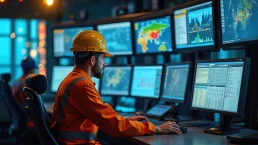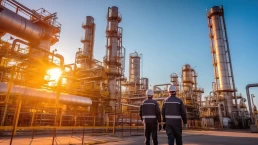In the oil and gas industry, where operations span hazardous environments and remote locations, ensuring the safety and connectivity of the workforce is critical. Connected worker technologies have emerged as transformative tools that harness the power of IoT, wearables, and real-time data analytics. These technologies are reshaping how companies protect and empower their workers, offering a much-needed solution in an industry fraught with risk.
Enhancing Safety through Real-Time Monitoring
Safety is a primary concern in the oil and gas industry, with dangerous working conditions leading to alarming incident rates. According to a 2021 report by the International Association of Oil & Gas Producers (IOGP), there were 25 fatalities and 594 recordable incidents globally. Connected worker technologies are addressing these numbers by providing real-time monitoring, which allows for the tracking of workers’ vital signs, locations, and environmental conditions.
Digitalization through connected worker technologies is crucial in the oil and gas industry for ensuring workforce safety and operational efficiency. By integrating IoT-enabled wearables, sensors, and real-time data analytics, companies can actively monitor the health and safety of their workers. This interconnected system provides live insights of worker location, and overall connectivity even in the most remote locations, allowing immediate responses to potential hazards. A study by Deloitte found that connected worker solutions have the potential to reduce workplace incidents by up to 27% in high-risk environments, making them a vital component in improving safety outcomes.
Optimizing Workforce Connectivity
Beyond enhancing safety, connected worker technologies are also instrumental in boosting workforce connectivity and operational efficiency. These technologies create a seamless link between workers, supervisors, and the central command, allowing for real-time updates and communication. The ability to instantly relay crucial information and instructions significantly reduces the chance of miscommunication, ensuring that work is completed efficiently and safely.
For instance, RTLS (Real-Time Location Solution) enabled devices like Tracklynk are used to track personnel and assets in real-time, providing an IIoT wireless protocol, where businesses can streamline data management, automate processes, and provide advanced reporting. This predictive maintenance approach not only improves safety but also minimizes costly operational disruptions. According to a report by McKinsey, increased digital connectivity within the oil and gas sector can increase productivity by up to 20%.
Bridging the Skills Gap with Digitalization
Connected worker technologies are also addressing the skills gap that persists in the oil and gas industry. With many experienced workers nearing retirement, new hires must be adequately prepared for the complex challenges that this sector presents. Connected worker solutions allow for enhanced training and upskilling through digital platforms that provide real-time feedback and knowledge sharing.
These solutions also create opportunities for less experienced workers to learn from experts in real-time, even when those experts are located remotely. Through digital platforms, workers can gain valuable insights and knowledge that were previously difficult to access, ensuring that safety and operational standards are maintained across the board.
Looking Ahead
The oil and gas industry is at a critical juncture where adopting connected worker technologies is no longer just an option but a necessity. According to a 2023 report by Markets and Markets, the global connected worker market is expected to grow from USD 8.9 billion in 2022 to USD 23.5 billion by 2027, reflecting the increasing adoption of these technologies across industries. This shift is not only helping companies create safer workplaces but also enhancing operational efficiency and productivity.
By embracing connected worker technologies, the oil and gas sector is protecting its workforce while driving innovation and operational excellence in one of the most demanding industries in the world. These technologies offer a new way forward, ensuring that workers remain connected, safe, and supported, even in the harshest environments.
Ready to revolutionize your workforce safety? Discover how Tracklynk’s advanced RTLS solutions can transform your oil and gas operations.



